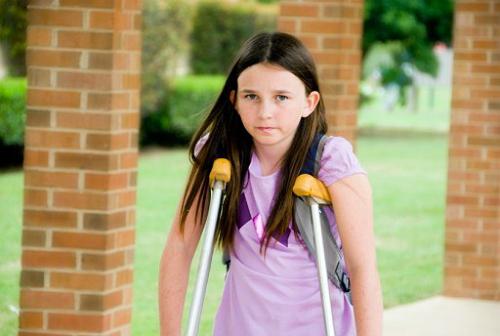Perthes disease refers to the pathology of bones and joints and is characterized by the destruction of the femur, and potentially the entire hip joint. The disease occurs in childhood, and it happens in children not so rarely, but parents, unfortunately, in most cases do not even suspect such an ailment. Perthes disease in children, the symptoms of which are not detected in the first stages of the course, is diagnosed even when changes have occurred in the hip joint. Children under the age of five rarely suffer from this disease, it is more characteristic of children aged six to ten years, more often boys.
Why does a child develop Perthes disease
Until now, it is not possible to fully establish the causes of the disease. It is believed that the bone is destroyed as a result of deterioration in the joint blood circulation, which happens due to injuries, metabolic disorders, infections, abnormalities of blood vessels and other reasons.
How does Perthes disease manifest in a child
As already mentioned, at the initial stages, signs of pathology are almost not expressed. Over time, a slight lameness appears, it can disappear after rest, and then reappear. Often children complain of pain not in the hip, but in the knee joint, as pain radiates to the knee. Such pain can appear during the day when walking. As the child's Perthes disease progresses, one can notice a slight decrease in the soft tissues of the lower leg and thigh in volume, limiting the extension and rotation of the hip joint. Usually, such signs are not given due attention, or they go unnoticed at all, because the general condition does not change.
Stages of the disease
In a child, Perthes disease develops slowly. At the first stage - the stage of the cartilage necrosis - the head of the femur begins to flatten. The second stage - the stage of impression fracture - is manifested by compaction with an even greater flattening of the femur. At the third stage - the stage of formation of bone fragments - the bone can stop growing, the development of subluxation (exit of the bone from the cavity of the joint) is possible. The fourth stage is the stage of restoration of the structure, and the fifth is the stage of consequences. Despite the fact that the structure of the femur is completely restored, the shape of its head most often remains deformed, which leads to a permanent permanent damage to the functioning of the joint. On X-rays, you can clearly see Perthes disease at any stage, however, due to the fact that the characteristic symptoms of the disease are absent, radiography in most cases is carried out with a great delay.

Perthes disease in children: treatment
Conservative or surgical treatment may be used. In the first case, the affected limb is unloaded by assigning the child to bed rest and subsequent walking on crutches. Along with this, a general strengthening therapy is made, which consists in taking vitamins, performing physiotherapeutic procedures, massage, and therapeutic gymnastics. Only when the structure of the femoral head is fully restored, you can begin to walk with a full load on the leg. Surgical treatment is aimed at stimulating the restoration of blood circulation in the joint.